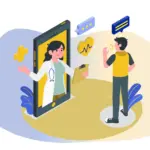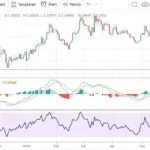The race to control the future of digital finance is heating up. On one side are fintech startups — agile, innovative, and laser-focused on disrupting traditional banking. On the other side, Big Tech giants like Apple, Google, Amazon, and Tencent are leveraging their massive ecosystems and user bases to move deeper into financial services. As both sides expand rapidly in 2025, the big question emerges: Who will dominate the next era of digital finance?
1. The Battle for the Digital Wallet
In 2025, the digital wallet has become the new frontline. Consumers now expect seamless, one-tap financial experiences — from payments and savings to investing and credit.
- Big Tech advantage: Companies like Apple Pay, Google Pay, and WeChat Pay already reach billions of users daily. Their ecosystems are embedded in smartphones, online marketplaces, and social apps — giving them instant access to customer transactions and behavioral data.
- Fintech response: Startups such as Revolut, Wise, and Grab Financial are countering by offering multi-currency wallets, cross-border transfers, and integrated budgeting tools — often with lower fees and faster innovation cycles.
In essence, Big Tech owns the platforms, but fintechs are winning with specialization and flexibility.
2. Trust, Regulation, and the Compliance Factor
Trust remains a key battleground. While Big Tech companies enjoy strong brand recognition, regulators are scrutinizing their moves into financial services. Concerns over data privacy, market dominance, and antitrust violations are intensifying.
Fintechs, by contrast, have adapted quickly to strict financial regulations — building partnerships with banks and compliance-first frameworks. This agility gives them an advantage in markets where regulators prioritize financial stability and consumer protection.
However, as both sides expand globally, collaboration with traditional banks and regulators will be essential for scaling responsibly.
3. The Data War: Who Knows You Better?
Both Big Tech and fintechs thrive on data — but they use it differently.
- Big Tech leverages vast behavioral data from e-commerce, search, and social media to offer hyper-personalized financial services. For example, Amazon uses purchase histories to offer business credit, while Apple’s ecosystem integrates financial management into everyday device use.
- Fintechs, on the other hand, specialize in financial data intelligence — analyzing spending habits, income flows, and investment behavior to offer customized banking, lending, and savings solutions.
The winner in this war will be the one that balances personalization with privacy, giving consumers value without compromising their trust.
4. Embedded Finance: The Invisible Revolution
The next wave of competition isn’t happening on banking apps — it’s happening everywhere else.
Embedded finance integrates banking services directly into non-financial platforms. For instance:
- Ride-hailing apps offering instant driver loans.
- E-commerce sites providing one-click financing.
- Super apps combining payments, investments, and insurance in one interface.
Big Tech has the advantage of scale and integration here, but fintechs excel at innovation and adaptability. Many fintechs now power the back-end of embedded finance through Banking-as-a-Service (BaaS) partnerships — quietly shaping the infrastructure Big Tech relies on.
5. AI and the Future of Digital Finance
Artificial Intelligence (AI) is redefining how companies engage customers, assess risk, and manage fraud.
- Big Tech companies are ahead in AI research and infrastructure, using advanced models to deliver predictive insights and personalized financial recommendations.
- Fintechs are deploying AI to automate underwriting, detect fraud, and manage portfolios — often faster and more efficiently than traditional systems.
In 2025, the fusion of AI and finance will likely lead to more AI-driven neobanks, voice-activated transactions, and predictive financial coaching. The competition will shift from who owns the platform to who offers the smartest experience.
6. Collaboration, Not Just Competition
Despite the rivalry, 2025 is also witnessing strategic partnerships between Big Tech and fintech players.
- Google and fintech startups are collaborating on embedded credit solutions.
- Apple partners with traditional banks for regulatory compliance and card issuance.
- Fintech infrastructure providers like Stripe and Plaid power Big Tech’s payment ecosystems behind the scenes.
This trend suggests that the future of digital finance may not be a zero-sum game — it’s a web of interdependence.
7. The Verdict: Who Will Win?
In reality, there may be no single winner.
- Big Tech will continue to dominate distribution and user engagement.
- Fintechs will lead in innovation, niche services, and regulatory adaptability.
- Traditional banks, meanwhile, will remain the backbone — providing trust, licenses, and compliance infrastructure that both sides need.
The most successful players will be those who collaborate across ecosystems, blending scale, innovation, and trust into a unified customer experience.
Conclusion
The battle between Big Tech and fintech isn’t about who replaces whom — it’s about who evolves faster. In the end, consumers stand to gain the most: faster payments, smarter banking, and more inclusive financial access.
As the digital finance landscape continues to mature, the future belongs not just to those who build the best technology, but to those who build the most trusted connections.














